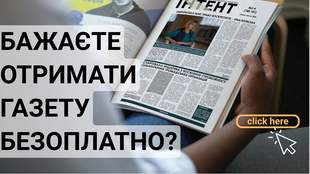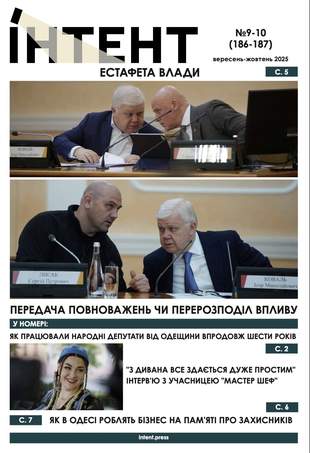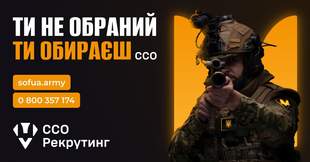Меню
Social networks
Sections
Aug. 23, 2023, 11:59 a.m.
"Anything that can be moved is potentially dangerous," - a military sapper about prosthetic legs and demining
Цей матеріал також доступний українською832
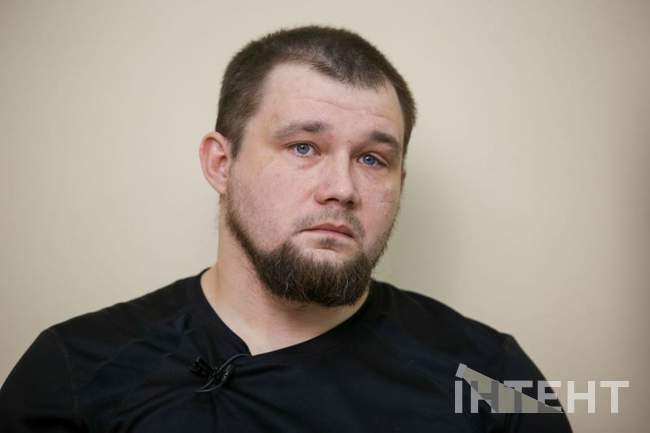
Photo: Intent, Natalya Dovbysh
"Anything that can be moved or picked up is potentially dangerous," says military sapper Volodymyr Sobovenko, who has been in war for over 9 years. In March 2023, he hit a mine in his car and got injured. Initially, there was the hope to save his legs, but it didn't materialise. An Intent journalist met Volodymyr in August when he was already standing on both prostheses. Here is his account.
How did it all start?
After graduating from high school in 2006, I entered the Military Engineering Institute, specialising in demining. Post-graduation, I was assigned to the then Ministry of Emergencies in Oleksandria, serving as a rescuer until 2015. My tasks included searching for and identifying explosive devices. With the onset of the anti-terrorist operation, I faced difficulties with dismissal and transfer to the security forces. I decided to move closer to the frontline, serving in the National Guard until 2020, and later resigning to change the profile. With the full-scale invasion, I was mobilised and served in a separate rifle battalion in the Kirovohrad region.
We actively participated in the deliberation of the Kherson region, and my engineering unit continues to demine the area. The region is heavily contaminated with mines, shells, and hailstones – remnants from the Soviet times.
On March 5, while performing a routine task of surveying the area with engineering reconnaissance, we hit a mine. Three other sappers who were with me in the car luckily ended up unharmed with minor shell shocks. I got the worst of it as the mine exploded under the wheel I was sitting on.
After the explosion, the guys managed to get me out of the car, and I immediately lost consciousness. Medics arrived, and I was taken to the nearest hospital in Boryslav, 25 kilometres away. I remember the chaos – torn trousers, tourniquets, painkillers – and then I passed out.
After the operation, I woke up with both legs in good condition but attached to Ilizarov devices. There was hope for recovery. I was transported to Kherson, then to Mykolaiv and finally to Odesa's 11th Clinical Hospital. Doctors considered recovery possibilities, but after an operation, they concluded that amputation was necessary due to torn vessels, tendons, and nerves.
The amputation was performed, and I spent two challenging weeks on painkillers, but I recovered relatively quickly. After the first operation, I woke up in Mykolaiv hospital without my lower limbs, with only a watch and underwear. All else was cut off, and my phone was taken by the guys who were with me. In the intensive care unit, without my phone, I found a way to inform my family. After three days of silence, I called my wife, explaining the situation. A temporary phone was arranged, and my wife arrived on the fourth day after the amputation.
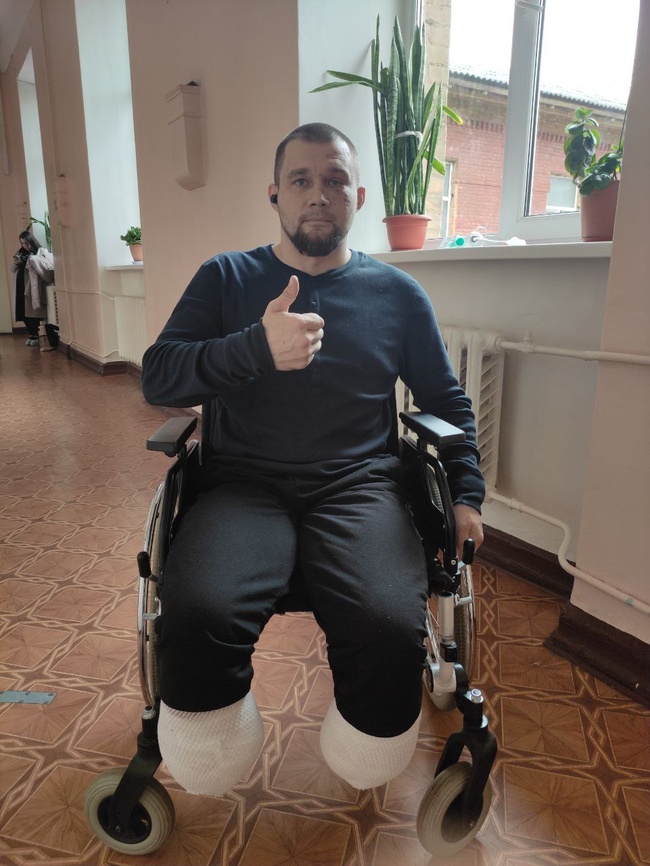 Photo from the personal archive of Volodymyr Sobovenko
Photo from the personal archive of Volodymyr Sobovenko
How did you go about finding a prosthetics facility, and was this information readily available?
In the hospital, a prosthetics centre promptly contacted me through my doctor. After discussions, we concluded that I needed to wait for proper healing since my scars were still quite large, and there were ongoing issues with leaks. During this time, several comrades who had faced similar situations in their work contacted me. They shared valuable information, and one who had also undergone amputation shared his personal experience. Eventually, representatives from the "No Limits" prosthetics centre approached me with several options.
Concerning the prospect of getting prosthetics abroad, my perspective was shaped by personal experience. Opting for prosthetics here meant I would have a warranty and service readily available. In case of any issues, I could easily reach the prosthetics centre for repairs or replacements with just a six-hour train journey – no significant challenges. Currently, a government program provides funding for prosthetics for soldiers who have lost limbs. The allocated funds appear sufficient, and there is a diverse selection of centres. Fortunately, I didn't incur any costs; they provided me with basic prostheses, placing me in the fourth mobility group and allowing me to ride a bicycle.
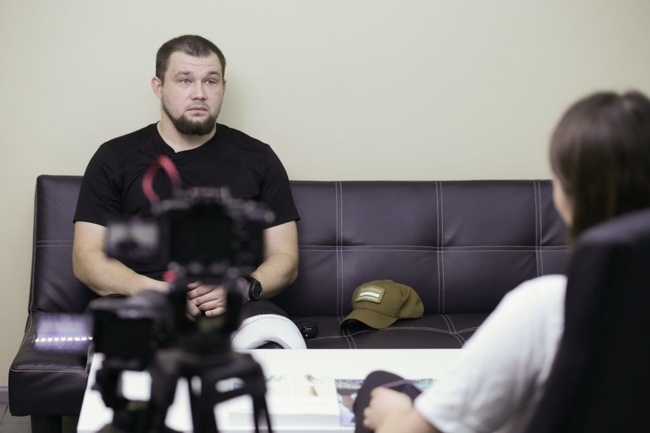 Photo: Intent, Natalya Dovbysh
Photo: Intent, Natalya Dovbysh
How long is the rehabilitation process?
I received my first training prostheses two months after the amputation, a relatively short and positive timeframe, as per my discussion with the doctor. It's crucial to transition to prostheses within the first one and a half to two months post-amputation for optimal stump formation. Some individuals delay and go without prostheses for up to seven months. My motivation was to stand up as soon as possible and return to the army to resume my service.
Regarding infrastructural shortcomings in the city that require attention.
This issue extends beyond Odesa, but perhaps I hadn't noticed it before. About a month and a half after my amputation, my wife and I ventured into the city in a wheelchair from the centre to Shevchenko Park. Navigating everywhere independently in a wheelchair proves challenging, and not all pedestrian crossings are convenient. It becomes particularly frustrating when a car is parked right next to a wall, forcing wheelchair users to traverse the roadway due to the lack of accessible paths.
What kind of reactions did you observe from people when you first started using prostheses?
The initial outings into the city on prostheses were moments of keen observation. I used to wear glasses to gauge people's reactions. While I wouldn't say there were numerous reactions, some individuals would place their hands on their hearts, nod, and express gratitude. I'd like to extend my thanks to the taxi drivers in Odesa; they often provide free rides. The overall response has been predominantly positive, and it doesn't require anything complex. Admittedly, there are those who avert their gaze, perhaps out of embarrassment or lack of understanding, but there's no need to shy away from it.
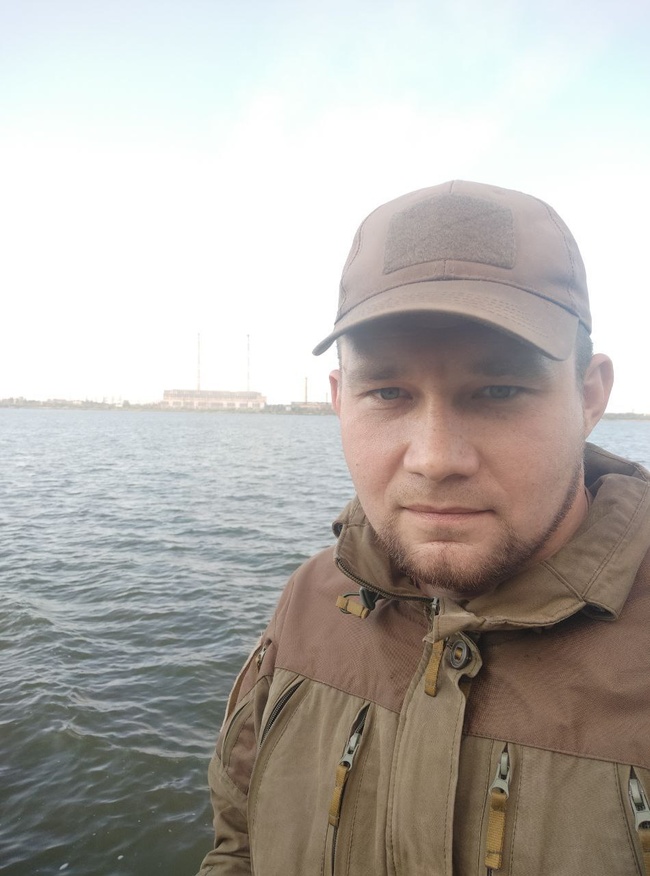 Photo from the personal archive of Volodymyr Sobovenko
Photo from the personal archive of Volodymyr Sobovenko
Although the number of people using prostheses is currently limited, it's expected to increase. It's crucial to respond appropriately and educate children so that they perceive an amputee as an ordinary person who has lost a limb. Children exclaiming, "Mum, Dad, look!" should be considered normal, but it also signifies the parents' responsibility to foster understanding.
Have you discussed your situation with your children?
The eldest is aware, although they haven't seen me in this condition yet. It's a conversation we need to have, but explaining the complexities of war and how their father lost his legs to 6 and 4-year-olds proves challenging. The toughest part will be elucidating why this unfortunate event occurred.
Does communication among military personnel during rehabilitation prove beneficial?
Undoubtedly, it's akin to a hobby group. Communicating with people facing similar situations and sharing common views facilitates the exchange of information. Military individuals with limited knowledge about the process, unsure about necessary documents or available benefits, find a valuable resource in such a club. It's an ideal platform to learn and gather information.
Were you contemplating a return to the front using prostheses?
Immediately after receiving my prosthetics, the idea of returning to the front burned intensely, despite the pain and reliance on painkillers. There's a distinct energy that compels you to believe you can accomplish more. While many individuals do return, it's acknowledged that certain physiological limitations come with the loss of two legs. Opportunities may exist in less physically demanding roles, but such pursuits aren't my preference.
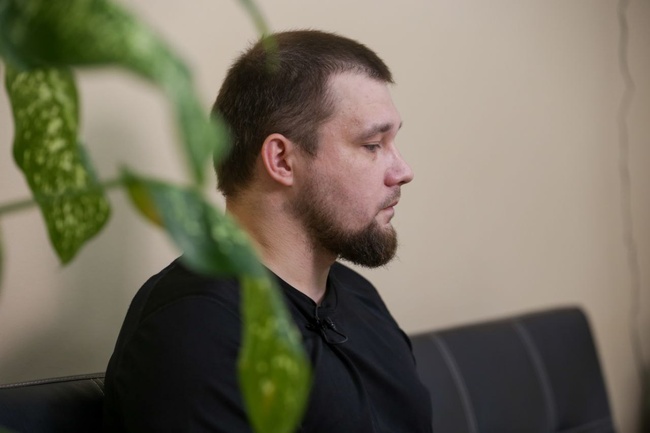 Photo: Intent, Natalya Dovbysh
Photo: Intent, Natalya Dovbysh
Certainly, I need to seek employment, earn a living, and secure a pension, but I don't rely heavily on it; it's insufficient for supporting a family. With 15 years of experience, my intention is to contribute to demining efforts in the country. While direct involvement may not be feasible, teaching becomes a viable option. I've already trained individuals in my battalion during my sick leave, and they continue to perform tasks proficiently.
Could you elaborate on the demining process?
Demining involves meticulously traversing contaminated ground with a metal detector, particularly in areas scarred by hostilities. Metal detectors detect surface or subsurface metal. Standard ones reach depths of 60 cm, advanced models up to 1.20 m, and deeper variants up to three meters. Progress is slow, inch by inch. When something is detected, a halt is necessary, maintaining a safe distance. This is both a safety measure and a requirement to prevent interference between metal detectors.
In larger areas, roads are cleared first, followed by other fields. In urbanised regions with previous enemy presence, the possibility of widespread mining must be considered. Ordinary grenades could be buried, and items concealed in toys, doors, or any movable object pose potential threats. The State Emergency Service of Ukraine issues a certificate upon completion, guaranteeing the safety of machinery for agronomists.
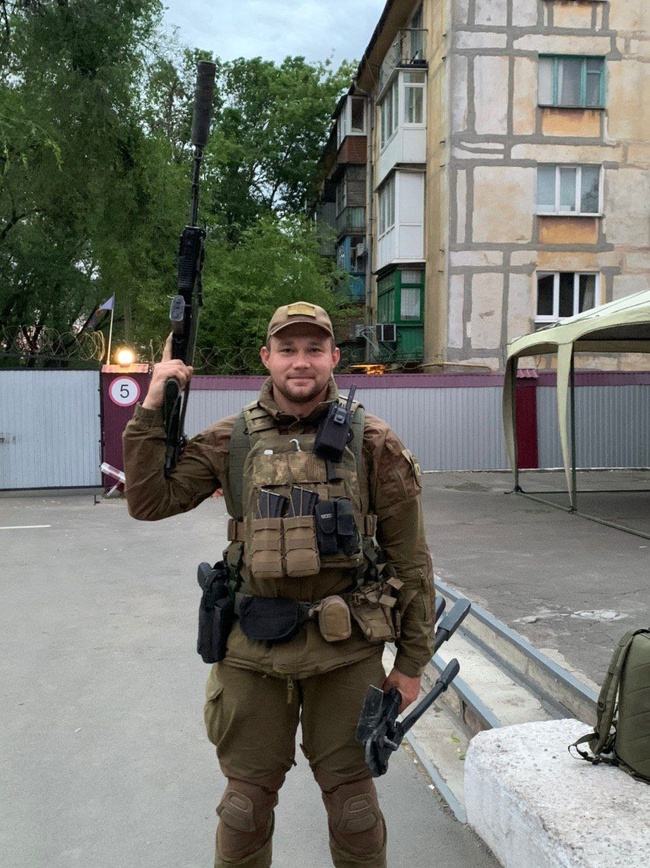 Photo from the personal archive of Volodymyr Sobovenko
Photo from the personal archive of Volodymyr Sobovenko
Internationally, the IMAS system provides comprehensive data on mined and unmined areas worldwide, detailing area, depth, detection status, and clearance. The SES extends demining efforts underwater, up to 5 meters, utilising pyrotechnic divers equipped with specialised suits and devices.
Has the enemy's tactics changed since the start of the full-scale invasion?
The enemy's tactics have remained consistent; they continue to extensively mine areas, particularly during retreats when time allows. Abandoned warehouses, even those underground, contain numerous supplies. Notably, we encountered many ML 7 booby traps, often placed under every second or third mine. In instances where they lack conventional mining equipment, they exhibit clever resourcefulness by combining various elements. Due to the abundance of these hazards, vigilance is crucial.
What discussions occur at the front regarding the transition to civilian life?
Every soldier contemplates life post-war, varying based on their level of activity, involvement in operations, or injuries sustained. Plans differ – some are more engaged, while others may not plan at all, reaching a state of desperation that surprisingly endures the longest.
Should Ukrainians prepare for the possibility that everyone may have to participate in the fight?
Preparation is essential, especially for those envisioning a future in Ukraine with families and children. The imperative is to end this war so that our children won't be forced to continue it. As a father of three, with my eldest son currently 12 and the middle one at 6, considering the time span since the ATO began in 2014, which is now nine years, the concern is what the next decade holds. Mobilisation is necessary – those capable of wielding weapons should prepare, while others can contribute in different ways. This relentless conflict must be halted.
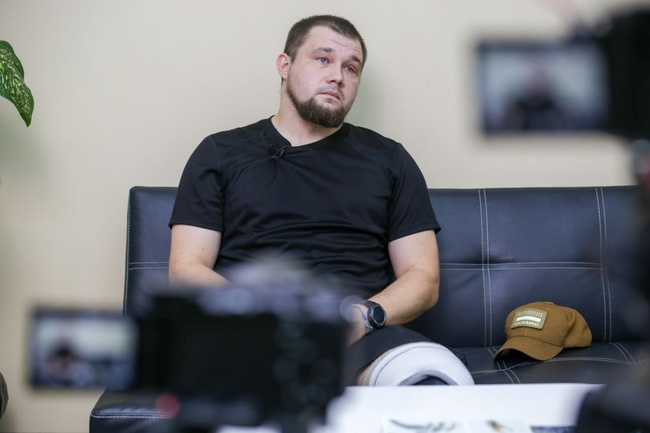 Photo: Intent, Natalya Dovbysh
Photo: Intent, Natalya Dovbysh
What are your future plans?
I currently have no specific plans. Thoughts and considerations during the war have dissipated, leaving me focused on returning home. Between 2015 and 2020, my trips consumed 7-8 months each year. My daughter turned four during this period, and I could only attend one of her birthdays. My primary desire now is to spend more time with my family.

